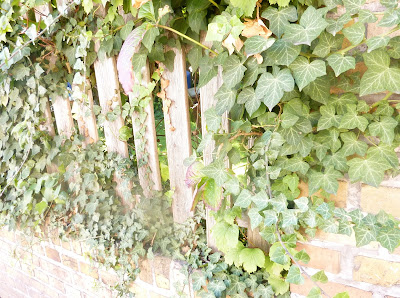The municipal archives of Mainz are closed on Thursdays. In future, I'm sure I'll find productive ways to take advantage of this--writing, working on my databases, going to other archives--but today, I decided to frolic on this enforced day off. So I googled "Wanderwege Mainz," found a database of German walking/hiking trails searchable by starting point and desired distance (because of course such a thing exists) and found myself a Wanderweg. This helpful database noted that it was recommended to use a map when following their routes. It also made a note of how the routes were marked. I tend to think of "recommended maps" as the sort of thing that one scrutinizes anxiously for about 15 minutes, stuffs into one's bag in order to use the hands-free signs, and then stuffs at the back of a drawer for about 15 years. Well. Fortunately, I bought one anyway, on the principle that I could use it to plan independent expeditions. (The train station bookshop had a section devoted to maps of walking/hiking and bicycle trails. Have you gathered yet that the Germans are serious about this whole Wandern business?) Arrived in Gonsenheim, the village where my route was to begin, I walked in a circle twice without seeing any of the promised signs. And then I saw the sign on the left: the little yellow seashell on the blue background. This was a sign I recognized: such symbols mark the roads to Santiago de Compostela. Three weeks of walking through Spain trained me to greet these signs with joy, and so I decided to follow this one. And I was rewarded, for I soon began to recognize landmarks on my map, though I never did find the alleged path markings.
And soon enough, I found myself on the outskirts of the village. This handsome fellow was indeed this close to me, though behind a fence in a protected Wildpark:
Both of these chapels were locked, though the first of them is still in use. They're both dedicated to the Fourteen Holy Helpers. Not even medievalists (!) are certain as to how the fourteen saints indicated by this title came to be grouped together, although the most popular theory suggests that each of them was thought efficacious against a different symptom of plague. I found these especially interesting because of my work on the intersections between medicine and religion in the century or so before the Black Plague:
And I spent a lot of time (probably more than necessary; there were many unmarked paths) wandering through the woods, which looked like this.
Somewhat to my own surprise, I did not meet any gnomes, but I did succeed in finding this tower, erected as a lookout point...
...for obvious reasons.
I felt quite proud of myself for clambering up to the tower, and then up the tower itself. Then a German couple in their 70s came up the stair behind me.
After quite a bit more walking through the gnome-worthy woods, I arrived in Budenheim, which proved to be charming.
I couldn't resist photographing the following two neighboring houses.
And then I bought an ice cream on the way to the train station. I had almost given up on finding a place that sold ice cream when I saw an elegantly-suited business man happily noshing just such an ice cream bar as I hoped to acquire. Germans: committed to serious walking and shameless public ice cream consumption. Lo, I have come into a good land.
 |
| Gonsenheim |
 |
| 17th-century knight's residence, Gonsenheim |
Both of these chapels were locked, though the first of them is still in use. They're both dedicated to the Fourteen Holy Helpers. Not even medievalists (!) are certain as to how the fourteen saints indicated by this title came to be grouped together, although the most popular theory suggests that each of them was thought efficacious against a different symptom of plague. I found these especially interesting because of my work on the intersections between medicine and religion in the century or so before the Black Plague:
And I spent a lot of time (probably more than necessary; there were many unmarked paths) wandering through the woods, which looked like this.
Somewhat to my own surprise, I did not meet any gnomes, but I did succeed in finding this tower, erected as a lookout point...
...for obvious reasons.
I felt quite proud of myself for clambering up to the tower, and then up the tower itself. Then a German couple in their 70s came up the stair behind me.
After quite a bit more walking through the gnome-worthy woods, I arrived in Budenheim, which proved to be charming.
I couldn't resist photographing the following two neighboring houses.
And then I bought an ice cream on the way to the train station. I had almost given up on finding a place that sold ice cream when I saw an elegantly-suited business man happily noshing just such an ice cream bar as I hoped to acquire. Germans: committed to serious walking and shameless public ice cream consumption. Lo, I have come into a good land.











No comments:
Post a Comment